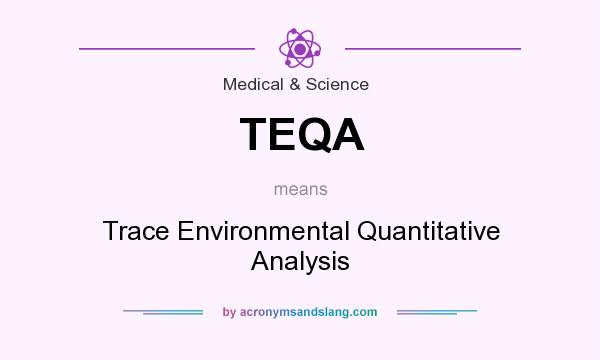What does TEQA mean?
TEQA means Trace Environmental Quantitative Analysis
This acronym/slang usually belongs to Medical & Science category.
What is the abbreviation for Trace Environmental Quantitative Analysis?
Trace Environmental Quantitative Analysis can be abbreviated as TEQA

|
|
Most popular questions people look for before coming to this page
| Q: A: |
What does TEQA stand for? TEQA stands for "Trace Environmental Quantitative Analysis". |
| Q: A: |
How to abbreviate "Trace Environmental Quantitative Analysis"? "Trace Environmental Quantitative Analysis" can be abbreviated as TEQA. |
| Q: A: |
What is the meaning of TEQA abbreviation? The meaning of TEQA abbreviation is "Trace Environmental Quantitative Analysis". |
| Q: A: |
What is TEQA abbreviation? One of the definitions of TEQA is "Trace Environmental Quantitative Analysis". |
| Q: A: |
What does TEQA mean? TEQA as abbreviation means "Trace Environmental Quantitative Analysis". |
| Q: A: |
What is shorthand of Trace Environmental Quantitative Analysis? The most common shorthand of "Trace Environmental Quantitative Analysis" is TEQA. |
Abbreviations or Slang with similar meaning
- ERAMAS - Environmental Risk Analysis and Management System
- QAIB - Quantitative Analysis of Investor Behavior
- EEA - Environmental Effect Analysis
- ESAM - Environmental Sampling Analysis & Monitoring
- EQAL - Environmental Quality Analysis Laboratory
- ERAP - Environmental Risk Analysis Program
- EPAN - Environmental Policy Analysis Network
- QA - Quantitative Analysis
- QAOM - Quantitative Analysis and Operations Management
- QAR - Quantitative Analysis Report
- ECA - Environmental Cost Analysis
- ECAM - Environmental Cost Analysis Methodology
- ECAS - Environmental Cost Analysis System
- EDAS - Environmental Data Analysis System
- EQRA - Environmental Quantitative Risk Assessment
- QAI - quantitative analysis of images
- QUASA - Quantitative Analysis of Situational Awareness
- QUASE - Quantitative Analysis for Self Evaluation
- TBPA - Trace Based Protocol Analysis
- QALE - Quantitative Analysis Of Ligand Effects